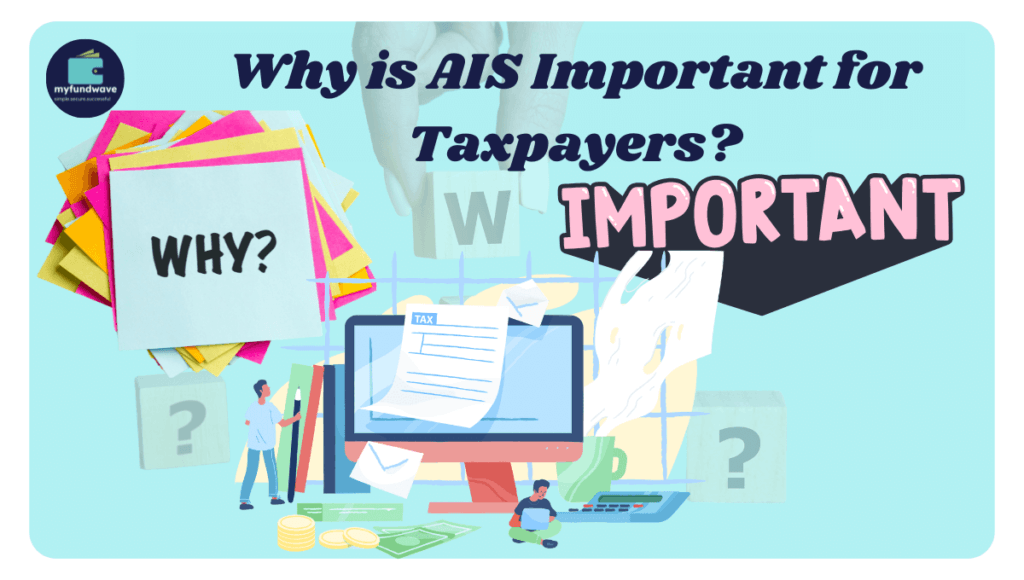Introduction
What is the Annual Information Statement (AIS) in Income Tax?
Table of Contents

Annual Information Statement (AIS) is a detailed financial summary issued by the Income Tax Department. This statement provides complete information about your income sources, investments, high-value transactions, refunds, and tax deductions. Earlier, taxpayers could only view their tax-related information through Form 26AS, but AIS now provides a more comprehensive report.
AIS covers your bank interest, stock market transactions, mutual fund investments, rent income, property purchases, foreign remittances, and many other financial activities. All these details are collected from third-party sources such as banks, stock exchanges, mutual fund houses, and registrar offices. Its main objective is to enable taxpayers to easily track their financial activity and file accurate ITR.
AIS vs Form 26AS: What’s the Difference?

Form 26AS only shows TDS/TCS details and tax payments.
AIS also contains the complete financial history, including high-value transactions.
AIS also gives taxpayers the option to check discrepancies and provide feedback if they find any wrong transaction reported.
Key Features of the Annual Information Statement (AIS)

Using AIS, you can avoid tax notices and mismatches and streamline your tax filing process. For this reason, it is very important to check your AIS before filing ITR!
AIS is a comprehensive financial statement that keeps a record of all your income sources and transactions. Here are some important features that make AIS unique:
Complete Financial Summary
AIS contains details of your salary, dividends, bank interest, stock market transactions, mutual funds, rent income, foreign remittances, and other high-value transactions.
TDS/TCS and Tax Details
AIS also shows details of your TDS (Tax Deducted at Source) and TCS (Tax Collected at Source), which are deducted by banks, employers, or financial institutions
AIS vs Form 26AS – More Detailed Information
While Form 26AS only shows TDS/TCS and tax payments, AIS contains the complete financial history, which makes tax compliance even better.
Mismatch Identification and Feedback Option
If any wrong or extra transaction is seen in AIS, then you can give feedback on that transaction and inform the tax department for correction.
Paperless & Digital Access
You can access AIS online from the Income Tax e-Filing portal, in which you also get the option to download in PDF and JSON format.
Transparency & Accuracy in Tax Filing
The main objective of AIS is to provide taxpayers with a clear picture of their income and tax-related information so that ITR filing is accurate and the risk of tax notices is reduced.
Regular Updates
AIS is updated from time to time, so that new transactions are automatically added and taxpayers can always see updated data.
How to Check and Download AIS Online? (Step-by-Step Guide)

You can check your Annual Information Statement (AIS) online through the Income Tax e-Filing portal. Follow these steps:
Step 1:- Visit the Income Tax Portal
Go to Income Tax e-Filing.
Step 2:- Log in
Click “Login.”
Enter your PAN as User ID.
Provide your password and complete verification (OTP or Captcha).
Step 3:- Open AIS Section
Go to the ‘Services’ tab.
Click ‘Annual Information Statement (AIS).’
Step 4:- View or Download AIS
View your AIS online.
To download, select ‘Download’ (PDF or JSON).
The PDF password is your PAN (lowercase) + DOB (DDMMYYYY).
Step 5:- Verify Details
Check transactions carefully. Report errors using ‘Submit Feedback.’
Why is AIS Important for Taxpayers?

Once you download or view AIS, carefully review all transactions. Your income sources, tax deductions, TDS/TCS details, investments, stock market trades, foreign remittances, and high-value transactions are all recorded in AIS.
If you notice a mismatch or error, cross-check it with bank statements, Form 16, and other financial documents.
What to Do If Your AIS Has Errors?

If AIS sees an incorrect or duplicate entry, use the “Submit Feedback” option. This feature gives you a chance to report errors to the Income Tax Department.
You can choose different options for feedback:
- Information is correct – If the details are correct.
- Information is incorrect – If any wrong transaction is showing.
- Duplicate information – If the same transaction is reflecting multiple times.
- Not related to me – If any transaction is not yours.
FAQs About AIS
AIS is automatically updated whenever your financial transactions are recorded. Taxpayers are recommended to check AIS from time to time, so that any new addition or correction is not missed.
If you have recently made a major financial transaction, it may take some time to reflect, but eventually all the details are included.
Conclusion
The Annual Information Statement (AIS) is a crucial tool for taxpayers, ensuring accurate tax filing and income transparency. By regularly checking AIS in Income Tax, you can verify financial details, avoid errors, and stay compliant. Accessing and reviewing your AIS tax statement helps streamline tax filing and prevents discrepancies.











